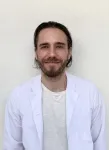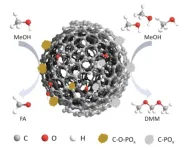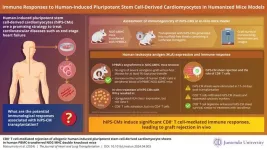(Press-News.org) An international consortium of researchers led by University Health Network (UHN) in Toronto and University of Zurich have built the first-ever molecular atlas of the human brain vasculature at single-cell resolution, spanning from early development to adulthood and through disease stages such as brain tumours and brain vascular malformations.
The international consortium includes research teams from UHN’s Krembil Brain Institute, Donald K. Johnson Eye Institute, Toronto General Hospital Research Institute and Princess Margaret Cancer Centre, the University of Toronto’s Donnelly Centre, Mount Sinai Hospital’s Lunenfeld-Tanenbaum Research Institute, University of Zurich, University Hospital Zurich, ETH Zurich, University of Geneva, University Hospital Geneva, as well as collaborators at Weill Cornell Medicine and Memorial Sloan Kettering Cancer Center, in New York.
In this study, researchers isolated blood vessels from human early developing brains, adult brains, brain tumours and brain vascular malformations. They found that endothelial cells, which line the blood vessels and regulate interactions between the bloodstream and surrounding tissues, behave differently across various stages of brain development, and may have a more important role than previously understood within the brain’s neurovascular signaling networks.
This novel research is published today in Nature.
“The brain’s vasculature, or blood vessel cells, genes, and pathways, is important for the proper functioning of the healthy early developing and adult brain, as well as for a variety of brain diseases, such as brain tumours, stroke and brain vascular malformations,” says Dr. Thomas Wälchli, corresonding author of the study and a scientific associate at UHN’s Krembil Brain Institute, a consultant neurosurgeon at University College London (UCL)’s Victor Horsley Department of Neurosurgery, and an Associate Professor/Principal Clinical Research Fellow at the UCL Cancer Institute. “By understanding how these pathways grow and behave during early brain development, how they are silenced in the adult healthy brain, and how they get reactivated in disease, it will provide more insight into the normal functioning of the human brain vasculature and open doors to future therapeutic options.”
“UHN’s Krembil Brain Institute is a high-volume neurosurgical centre, which provided unparalleled access to a clinically diverse patient population. We were able to perform single-cell RNA sequencing of more than 600,000 isolated endothelial, perivascular and other tissue-derived cells from 117 samples, at an unprecedented resolution, giving us an extraordinary look into the inner workings of the brain’s vasculature,” says Dr. Ivan Radovanovic, staff neurosurgeon and Senior Scientist at UHN’s Krembil Brain Institute, Associate Professor at University of Toronto’s Temerty Faculty of Medicine, and co-author of the paper.
“This provides a very large data set that will be an important resource for researchers across the world. By uncovering key differences between healthy and diseased brain vasculature, our work can help identify vulnerabilities of abnormal brain vessels that can be utilized to treat both brain tumours and brain vascular malformations.”
Noted in the team’s findings:
Researchers found that the vasculature in an adult healthy brain stops growing almost completely over time, but a brain tumour or a brain vascular malformation can reactivate blood vessel growth in the brain tissue, similar to the blood vessel growth in an early developing brain. This finding has never been described before.
The research team also showed for the first time how the human brain vasculature differs from the vasculature of organs outside the brain, both during early brain development and in adulthood - and when disease arises, the brain vasculature becomes more like that of a peripheral organ.
In disease, the typical features of the human brain vasculature are partially altered. One example is the endothelial cells of the blood-brain barrier, which act as the brain’s ‘filter’ and gatekeeper for substances, toxins and drugs. Endothelial cells can also affect interactions with the body’s immune system. When disease occurs, these cells help to upregulate immune-specific properties, meaning that endothelial cells can evolve into ‘antigen-presenting cells,’ triggering an immune response.
“It will take many years, but if we can identify what is happening in an early developing brain and how those blood vessel networks grow over time, how they develop into arteries, capillaries, and veins, and interact with the immune system, we can better understand the growth patterns of the tumour vasculature,” says Dr. Wälchli.
“Both the early developing brain, and brain tumours and brain vascular malformations, feature blood vessel growth and immunosuppression which allow for undisturbed tissue growth. If we can dampen or inhibit the growth of the blood vessels and at the same time boost the immune system, that has a potential application to therapy.”
The hope is that if clinicians can one day combine these therapies targeting the vasculature with immunotherapies, they may be able to inhibit vascular growth and prolong patients’ survival.
“If we can detect the specific features in the brain vasculature that are shared between early developing brains and brain tumours (but are not present in the healthy normal brain), we could monitor the brain’s vasculature for growth patterns and be able to detect and treat disease at an earlier stage, improving patient outcomes,” says Dr. Wälchli.
This research aims to build on the momentum in the field of brain vascular biology, over the past several years.
“Our work will benefit scientists across disciplines, from developmental, vascular, computational and tumour biologists to neuroscientists, immunologists and single-cell geneticists,” adds Dr. Wälchli. “The possibilities are endless.”
Read other relevant papers by this group on the same research topic in Nature Reviews Neuroscience and JCI Insight.
This work was supported by UHN Foundation (Gill Family Charitable Trust, Irwin and Mariel Michael and family), the Canadian Institutes of Health Research, The Natural Sciences and Engineering Research Council of Canada, the Ontario Institute for Cancer Research and the Canada Research Chairs program, the OPO Foundation, the Swiss Cancer Research Foundation, the Stiftung zur Krebsbekämpfung, the Kurt und Senta Herrmann Foundation, Forschungskredit of the University of Zurich, the Zurich Cancer League, the Theodor und Ida Herzog Egli Foundation, the Novartis Foundation for Medical-Biological Research, the HOPE Foundation and the US National Institute of Health’s National Center for Research Resources.
About the Krembil Brain Institute
The Krembil Brain Institute at Toronto Western Hospital, part of University Health Network, is home to one of the world’s largest and most innovative teams of physicians and scientists uniquely working hand-in-hand to prevent and confront problems of the brain and spine. One in three Canadians will experience a brain-related condition such as Parkinson’s, Alzheimer’s or epilepsy in their lifetime. Through state-of-the-art patient care and advanced research, we are working relentlessly to find new treatments and cures. https://www.uhn.ca/Krembil
About University Health Network
UHN is Canada's No. 1 hospital and the world's No. 1 publicly funded hospital. With 10 sites and more than 20,000 members of TeamUHN, UHN consists of Toronto General Hospital, Toronto Western Hospital, Princess Margaret Cancer Centre, Toronto Rehabilitation Institute, The Michener Institute of Education and West Park Healthcare Centre. As Canada's top research hospital, the scope of research and complexity of cases at UHN have made it a national and international source for discovery, education and patient care. It has the largest hospital-based research program in Canada, with major research in cardiology, transplantation, neurosciences, oncology, surgical innovation, infectious diseases, genomic medicine and rehabilitation medicine. University Health Network is a research hospital affiliated with the University of Toronto. https://www.uhn.ca/
MEDIA CONTACT:
Heather Sherman
Communications Manager, UHN’s Krembil Brain Institute
heather.sherman@uhn.ca
END
Researchers build first-ever molecular atlas of blood vessel pathways in the human brain, across early brain development, adulthood and disease
Studying the growth patterns of the brain’s vasculature can lead to better understanding of the progression of brain diseases
2024-07-10
ELSE PRESS RELEASES FROM THIS DATE:
Antiferromagnetic phase transition observed in fermionic Hubbard quantum simulator
2024-07-10
In a study published online in Nature, a research team led by Prof. PAN Jianwei, Prof. CHEN Yuao, and Prof. YAO Xingcan from the University of Science and Technology of China (USTC) of the Chinese Academy of Sciences has, for the first time, observed the antiferromagnetic phase transition within a large-scale quantum simulator of the fermionic Hubbard model (FHM). This study highlights the advantages of quantum simulation. It marks an important first step towards obtaining the low-temperature phase diagram of the FHM and understanding the role of quantum magnetism in the mechanism of high-temperature ...
A drug that lowers blood lipids could help treat the world’s most common liver disease
2024-07-10
The University of Barcelona has led a study that suggests using the drug known as pemafibrate to treat liver disease associated with metabolic disorders, the most common liver pathology in the world, which affects one in four people. The drug has long been marketed in Japan for another use: improving blood lipid levels in patients with hyperlipidaemia, a common condition in diabetics. Now, however, it could help address this serious liver disease, which still has no specific treatment.
The study, carried out on laboratory animal models and published in the journal Biomedicine & Pharmacotherapy, was conducted by a team led by Professor Juan ...
Ochsner, AJMC® partner for conference on value-based care on July 25 in New Orleans
2024-07-10
NEW ORLEANS – Ochsner Health’s Healthy State initiative, in partnership with The American Journal of Managed Care, will host a free conference on value-based care from 3:30-7 p.m. on Thursday, July 25 at The Westin New Orleans hotel in Louisiana.
Registration and program details are available here for “Healthy State: Know It, Own It, Live It: Creating a Thriving Louisiana Through Innovation in Value-Based Care.” The event is open to the public, medical professionals, health policy experts and community organizers.
Organized ...
NIH funds consortium to accelerate development of new TB treatments
2024-07-10
A new consortium co-led by Weill Cornell Medicine, has been awarded a five-year, $31 million grant from the National Institutes of Health’s National Institute of Allergy and Infectious Diseases to accelerate the development of faster, more effective treatment regimens for tuberculosis (TB). Investigators at the University of California, San Francisco; Johns Hopkins Medicine; and Vanderbilt University Medical Center comprise the other co-leads.
The Preclinical Design and Clinical Translation ...
Older women more likely to receive heart surgery, die at low quality hospitals
2024-07-10
Women over the age of 65 who require complex heart surgery are more likely than men to receive care at low quality hospitals — where they also die in greater numbers following the procedure, a Michigan Medicine study finds.
The research, published in JAMA Network Open, covered nearly 450,000 Medicare beneficiaries who underwent coronary artery bypass grafting, or heart bypass surgery, between late 2015 and early 2020.
Compared to men, women were 1.26 times more likely to be treated at low quality hospitals, meaning facilities with the highest 30-day mortality rates.
At those low quality hospitals, ...
Nanocarbon catalyst design unlocks new avenue for sustainable fuel additive production
2024-07-10
Vehicle exhaust from fossil fuel combustion constitutes a main source of air pollutants like carbon dioxide and carbon monoxide. To mitigate air pollution, researchers are looking into additive to fuels like dimethoxymethane (DMM). But DMM production brings its own environmental hazards.
In their paper published June 21 in Carbon Future, a Chinese research team demonstrated how a series of phosphorous-modified nanocarbon catalysts could advance green DMM production.
Unique fuel properties of this diesel blend fuel include high oxygen content and chemical stability as well as low toxicity. A blend of DMM and ...
Wolves’ return has had only small impact on deer populations in NE Washington, study shows
2024-07-10
FROM: James Urton
(Note: researcher contact information at the end)
Humans drove wolves to extinction in Washington state around the 1930s. Thanks to conservation efforts, by about 80 years later, wolves had returned — crossing first from the Canadian border into Washington around 2008 and later entering the state from Idaho. Since then, wolf numbers in Washington have been steadily growing, raising questions about what the return of this large predator species means for ecosystems and people alike.
In northeast Washington, where wolves have recovered most successfully, researchers from the University of Washington and the Washington Department ...
Producing ‘space brick’ for moon base using microwave
2024-07-10
The Moon’s recent discovery of energy resources, such as water ice, has refocused interest on its potential as a sustainable hub for space exploration. NASA has also announced the Artemis mission, aiming for long-term human presence on the lunar surface. However, infrastructure expansion, such as lunar base construction plays a vital role.
Yet, transporting construction materials from Earth to the lunar surface via landers incurs a significant cost of 1.2 million USD per kilogram. Weight directly translates to cost, making the transportation of construction materials from Earth to the Moon nearly impossible.
To solve this problem, Korea ...
A simple firmware update completely hides a device’s Bluetooth fingerprint
2024-07-10
A smartphone’s unique Bluetooth fingerprint could be used to track the device’s user–until now. A team of researchers have developed a simple firmware update that can completely hide the Bluetooth fingerprint, eliminating the vulnerability.
The method was developed by a team of researchers at the University of California San Diego. The team discovered the vulnerability caused by Bluetooth fingerprints in a study they presented at the 2022 IEEE Security & Privacy conference. They presented the fix to this vulnerability two years later at the 2024 IEEE Security & Privacy conference. The math behind the update itself is complex but the implementation ...
Immunogenicity of human-induced pluripotent stem cell-derived cardiomyocyte sheets
2024-07-10
Ischemic heart disease stands as a significant global cause of morbidity and mortality. One promising avenue for treatment involves human induced pluripotent stem cell-derived cardiomyocytes (hiPS-CMs). Derived from adult somatic cells such as blood or skin cells, hiPS cells possess the capacity to differentiate into various tissues, including cardiomyocytes. These cells can potentially repair damaged heart tissue, but their clinical application is limited due to concerns about immune rejection. Understanding the immunogenicity of hiPS-CMs is crucial for advancing their ...
LAST 30 PRESS RELEASES:
The best hydrogen for heavy-duty transport is locally produced and green
Pregnancy-related high blood pressure varied among Asian, Pacific Islander subgroups
Measuring movement creates new way to map indoor air pollution
Europe’s crop droughts to get worse even as rain increases
New study identifies signature in blood to better predict type 2 diabetes risk
Research spotlight: developing “smart” nanoparticles to deliver targeted gene therapy in osteoarthritis
A CRISPR fingerprint of pathogenic C. auris fungi
Time warp: How marketers express time can affect what consumers buy
CBD treatment reverses key effects of fetal alcohol spectrum disorder in a mouse model
Blood sugar spikes linked to higher risk of Alzheimer's disease
Staying single for longer affects young people’s well-being
New method allows scientists to 3D-print structures within cells
Screening tool helps identify brain-related comorbidities in individuals with Duchenne muscular dystrophy
How do the active ingredients of monkfruit affect health?
News language and social networks: how do they affect the spread of immigration attitudes?
Researchers discover trigger of tendon disease
Your pet's flea treatment could be destroying the planet
Diabetes risk not associated with timing or type of menopause
Bulk inorganic crystals grown from water emit “handed” light
A new AI-based attack framework advances multi-agent reinforcement learning by amplifying vulnerability and bypassing defenses
While exploring the cosmos, astronauts also fuel explorations of the biology of aging and cellular resilience
Design and synthesis of Zr-IR825 nanoparticles for photothermal therapy of tumor cells
Food critics or food grabbers? When choosing food, wood mice split into careful examiners who sniff and handle, and quick nut grabbers
‘Cosmic clock’ reveals Australian landscapes’ history and potential future
Higher maternal blood pressure increases the risk of pregnancy complications, study concludes
Postoperative complications of medical tourism may cost NHS up to £20,000/patient
Phone apps nearly 3 times as good as no/basic support for quitting smoking long term
Female sex and higher education linked to escalating prevalence of obesity and overweight in Africa
THE LANCET + eCLINICALMEDICINE: Two studies on reductions in mortality from small changes lifestyle changes
AI model identifies how every country can improve its cancer outcomes
[Press-News.org] Researchers build first-ever molecular atlas of blood vessel pathways in the human brain, across early brain development, adulthood and diseaseStudying the growth patterns of the brain’s vasculature can lead to better understanding of the progression of brain diseases







